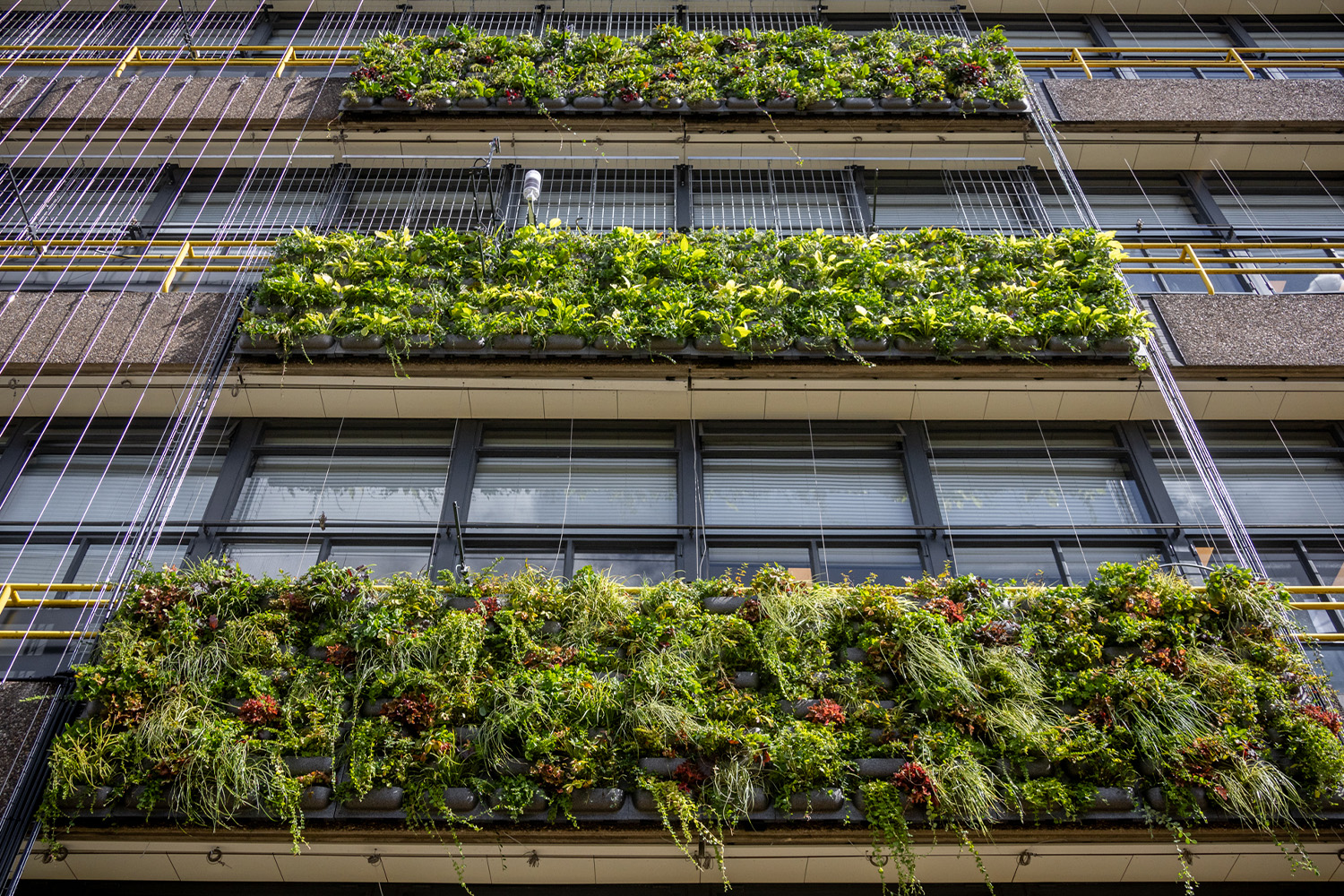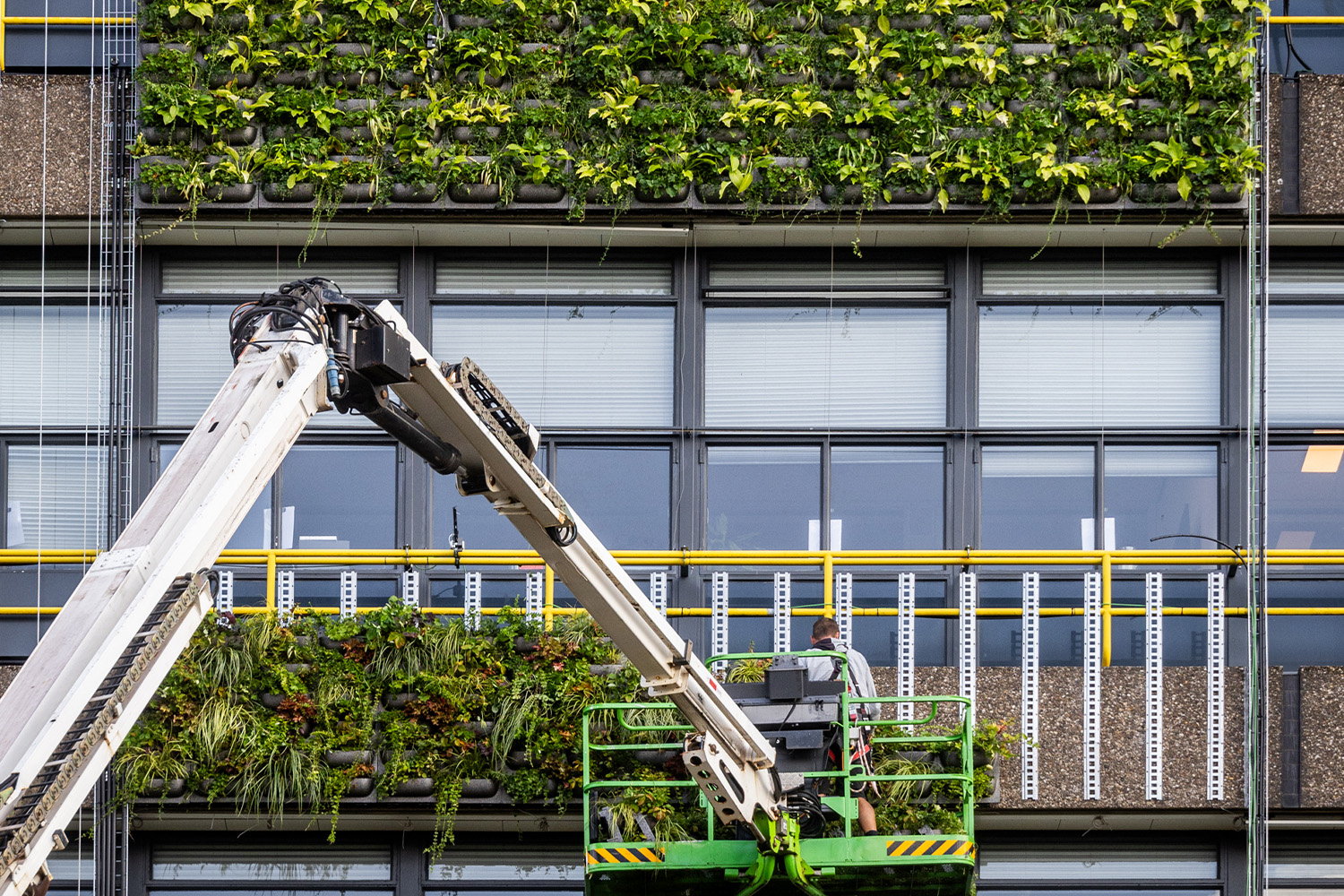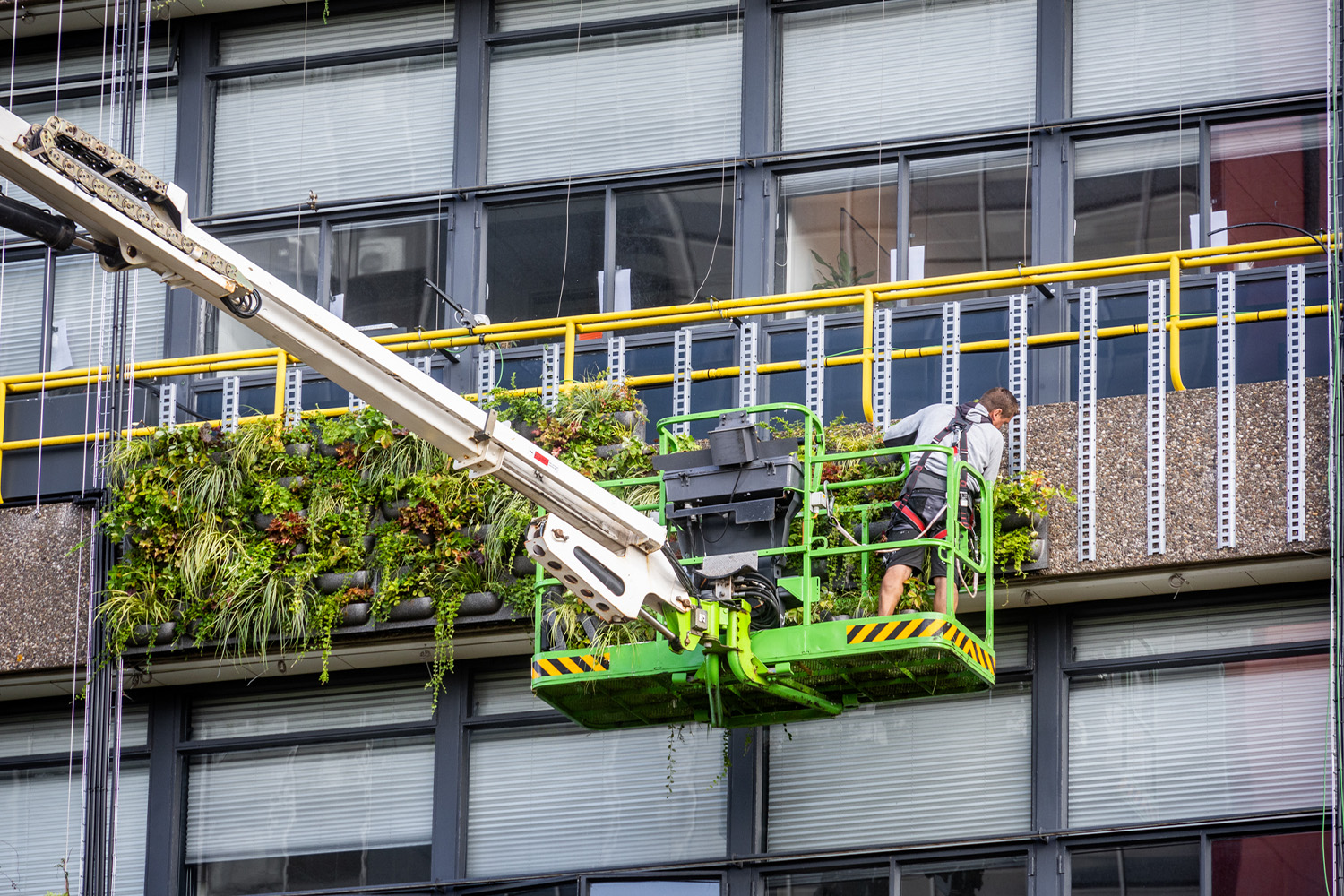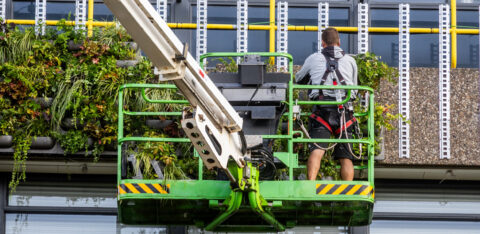Green facades at TU Delft: research with Mobilane systems
25 September 2025On the west facade of Building 23 at TU Delft, a unique study is being carried out into the functioning of green facades. For this purpose, two Mobilane systems have been installed: MobiPanel and WallPlanter. The university uses these facades as a living lab to make the effects of vertical greenery measurable. This TU Delft green facade research provides new insights into how vertical greenery contributes to sustainable buildings and cities.

TU Delft investigates three types of green facades
To properly compare the performance of green facades, TU Delft is testing three variants:
-
- Climbing plants on cables or mesh
- Living wall with plant containers and irrigation (MobiPanel)
- A combination of both systems
These pilot setups provide insight into the differences between climbing plants and modular systems, and how they contribute individually and together to a more sustainable building environment.
Advanced measurements in a living lab
The facades are equipped with sensors that continuously collect data. The TU Delft green facade research focuses on:
-
- Insulating effects and energy savings
- Temperature reduction on the facade
- Improvement of air quality and water management
- Promotion of biodiversity
- Impact on health and well-being
The results will be shared in an open database, supplemented with design tools and educational material, so that knowledge becomes widely available to architects, urban planners, and policymakers.

Mobilane’s role: MobiPanel and WallPlanter
For this research, two Mobilane systems have been selected:
-
- MobiPanel – a modular green facade system with integrated irrigation, ideally suited for urban applications.
- WallPlanter – a robust system with plant containers that offers flexibility in plant choice and supports large-scale facades.
The fact that TU Delft has chosen these systems confirms their reliability and practical applicability in both research and real-world implementation.
Why research into green facades is essential
Green facades play a key role in making cities more sustainable. They help with climate adaptation, improve quality of life, and contribute to biodiversity. Scientific research is crucial to substantiate these effects and to scale up their application.
Mobilane sees knowledge development as an important pillar alongside product development. By actively collaborating with universities such as TU Delft, we accelerate innovation and deliver substantiated insights for designers and clients.

TU Delft as an exemplary project for green cities
The TU Delft green facade research demonstrates how science and business work together on innovative and measurable solutions. The living lab at Building 23 is therefore a showcase project that paves the way for broader application of vertical greenery in the built environment.
FAQ on green facades at TU Delft
What does TU Delft research with green facades?
TU Delft measures the effects of green facades on insulation, energy consumption, temperature, air quality, water management, biodiversity, and well-being.
Which Mobilane systems are installed at TU Delft?
TU Delft uses the modular MobiPanel and the robust WallPlanter system.
Why is this research important?
It provides data and tools that support the design and realisation of sustainable, healthy, and climate-resilient cities.



